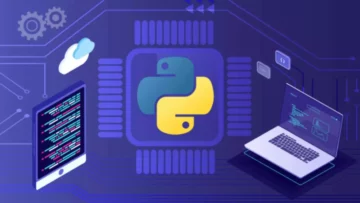You can then take advantage of the DbContext constructor to move configuration info, similar to a connection string. When working with Entity Framework Core, the DbContext represents a connection session with the database. It works as a unit of work, enabling developers to monitor and control adjustments made to entities earlier than entity framework approaches saving them to the database. We use the DbContext to retrieve knowledge for our entities or persist our entities in the database. Reads lessons and code-based configurations to build an in-memory mannequin, metadata, and related database. It additionally manages associations between utilizing information annotations/Fluent API.

There Must Be Just One Dbcontext Occasion Per Request/unit Of Work/transaction
We can create manually this class and configure it in DbContext like below or we can create all models of all or particular objects from Database. Entity framework uses connection string to specify the database it connects to. To set up a connection string you first have to override the OnConfiguring technique. The OnConfiguring technique accepts one argument of sort DbContextOptionsBuilder. This optionsBuilder object offers varied extension methods for selecting totally different server types.
As Quickly As the SaveChanges method execution is completed successfully, it’s going to transfer the Entity state from Modified to Unchanged state. The DBContext’s change tracker keeps monitor of these operations and sets the EntityState of every entity. This state is then used while saving the entity into the database, by producing the right insert, alter, delete queries. It will get the information from the database and populates the objects, tracks their state utilizing change tracking, and eventually persists the info to the database. Subsequent, create another class file named Branch.cs inside the Entities folder and replica and paste the next code. As you presumably can see, we’re creating the Branch class with a couple of scalar properties and one assortment Navigation property called Students.

Querying
In our instance, it is going to be StudentDataModel.Context.tt and inside this you will discover the context class as shown within the beneath image. So, in simple words, we can say that the DbContext occasion is the first class that is answerable for interacting with the database and performing the database CRUD Operations. Lastly, notice that multiple parallel operations cannot be executed concurrently on the identical DbContext instance. This refers to each the parallel execution of async queries and any express use of multiple threads of the occasion concurrently.
- Now, let us proceed further and attempt to understand the necessary methods supplied by the DbContext class in Entity Framework.
- The optionsBuilder.IsConfigured returns a boolean worth indicating whether any choices have been configured.
- This state is then used whereas saving the entity into the database, by producing the proper insert, alter, delete queries.
- We have completed creating the preliminary domain courses for our application.
Frequent Operations With The Dbcontext
Each of those courses are POCO (an acronym for Plain Old CLR Objects) lessons. The idea of a DbContext has been round since the first version of the Entity Framework was launched https://deveducation.com/. It is considered one of the basic constructing blocks within the Entity Framework and Entity Framework Core that are used for creating, querying, and updating data from a database.
The DbContextOptions instance carries configuration information such as the database providers to make use of, connection strings and any database related configuration information. Here’s the up to date source code of our customized Db context class named MyDbContext with change tracking and question monitoring disabled. Your area model objects shouldn’t be aware of the persistence mechanism, i.e., how the info is endured within the underlying knowledge retailer. It would help when you didn’t use Dependency Injection for your DbContext instance in area model objects.
In this article, I am going to debate DbContext Class in Entity Framework Database First Method in detail with Examples. Please learn our previous article the place we mentioned Mannequin Browser in Entity Framework. At the top of this article, you will perceive the need and use of the Entity Framework DbContext class intimately. We are going to work with the identical instance that we created in our Introduction to Entity Framework Database First Strategy article.
The results are mapped and returned as entity by the method called materialization. So, in the next article, I will focus on where to outline the Connection String in Entity Framework Core and tips on how to use it to work together with the SQL Server Database. In this text, I clarify the need and use of the DbContext Class in Entity Framework Core. I hope you get pleasure from this Entity Framework Core DbContext Class article. In other words, if your entities are persistence ignorant, they shouldn’t trouble about how they’re endured, created, retrieved, updated, or deleted. This would help you to focus extra on modeling your business area.

You could then choose one of the best strategy and modify the query before using the query again. A DbContext represents a group of entity units or tables in your database. It permits us to write down strongly-typed code against our database without having to deal with low-level SQL statements or having to fret about manually mapping lessons to database tables.
The connection string is handed to the Context in its constructor as shown below. Founded in 1997, Devart is currently one of the main developers of database administration software program, ALM solutions and knowledge providers for hottest database servers.© 2025 Devart. You can batch queries in EF Core to attenuate roundtrips and enhance performance. Another method to improve query performance in EF Core is by using compiled queries. You can refer to the Customer or Order class given later in this article.
The DbContext class is a core part of Entity Framework Core (EF Core) that acts as a bridge between your application’s area (entities) lessons and the underlying database. It manages database connections, performs CRUD (Create, Read, Replace, Delete) operations, manages transactions, and tracks adjustments to entities. The DbContext class is responsible for interacting with the database using the configured database provider (e.g., SQL Server, SQLite, and so forth.).
The following code is self-explained, so please go through the comment lines. The class is derived from the System.Information.Entity.DbContext class known as a context class in the entity framework. Now, let us proceed and attempt to perceive what are the responsibilities of the Entity Framework Context class intimately. The DbContext is commonly referred to because the context is the category which is responsible for interacting with the entity model and the database. It lets you question, insert, replace and delete operations on the entities.
It keeps track of the state of every entity by way of change tracker API. The state of the entity can be Added, Unchanged, Modified, deleted and indifferent and so forth. We have accomplished creating the initial domain courses for our software. As we progress in this course, we are going to add more area courses to this instance. The DbContext retains track of changes made to the entities inside its scope. It can detect additions, modifications, and deletions, which allows for environment friendly updates to the database.
